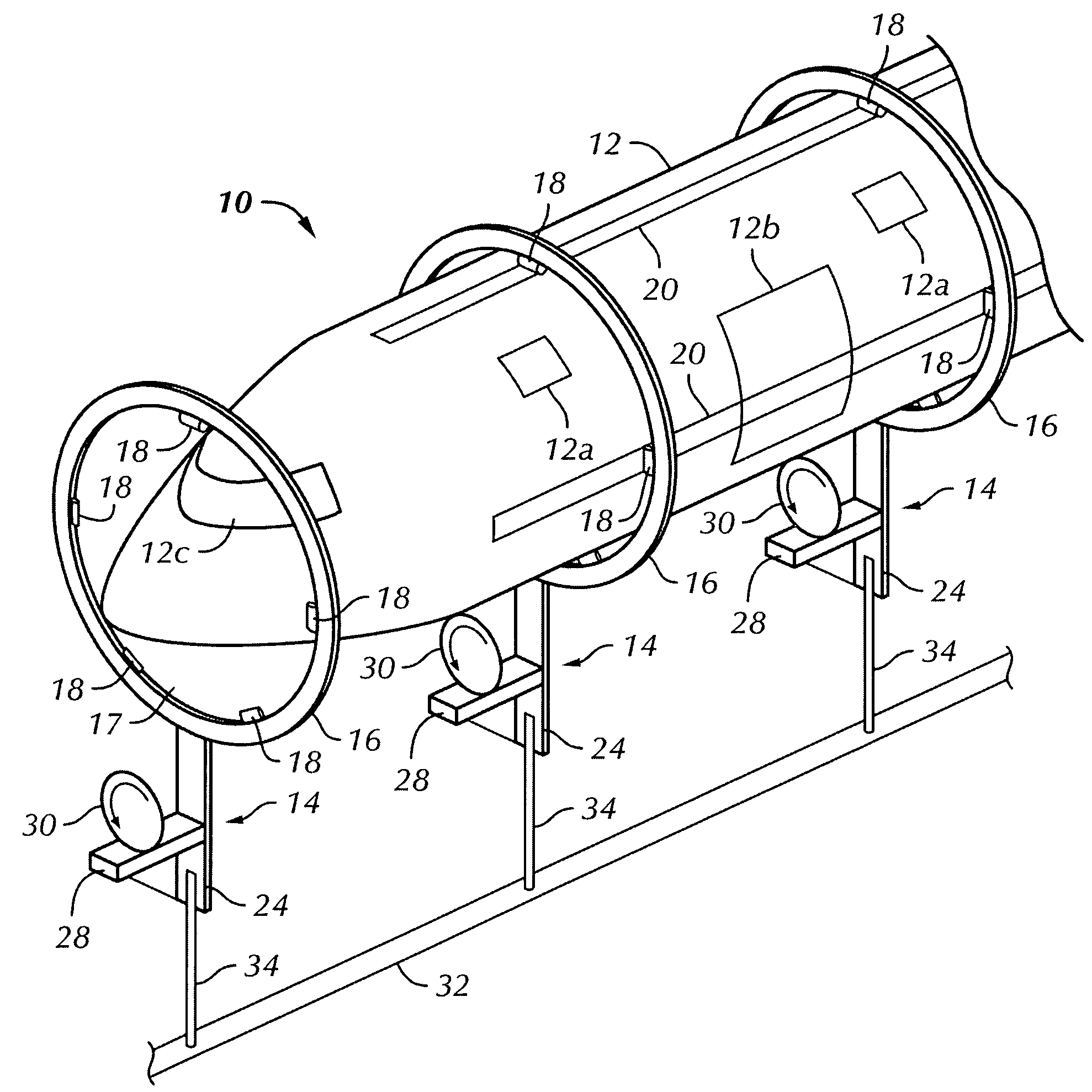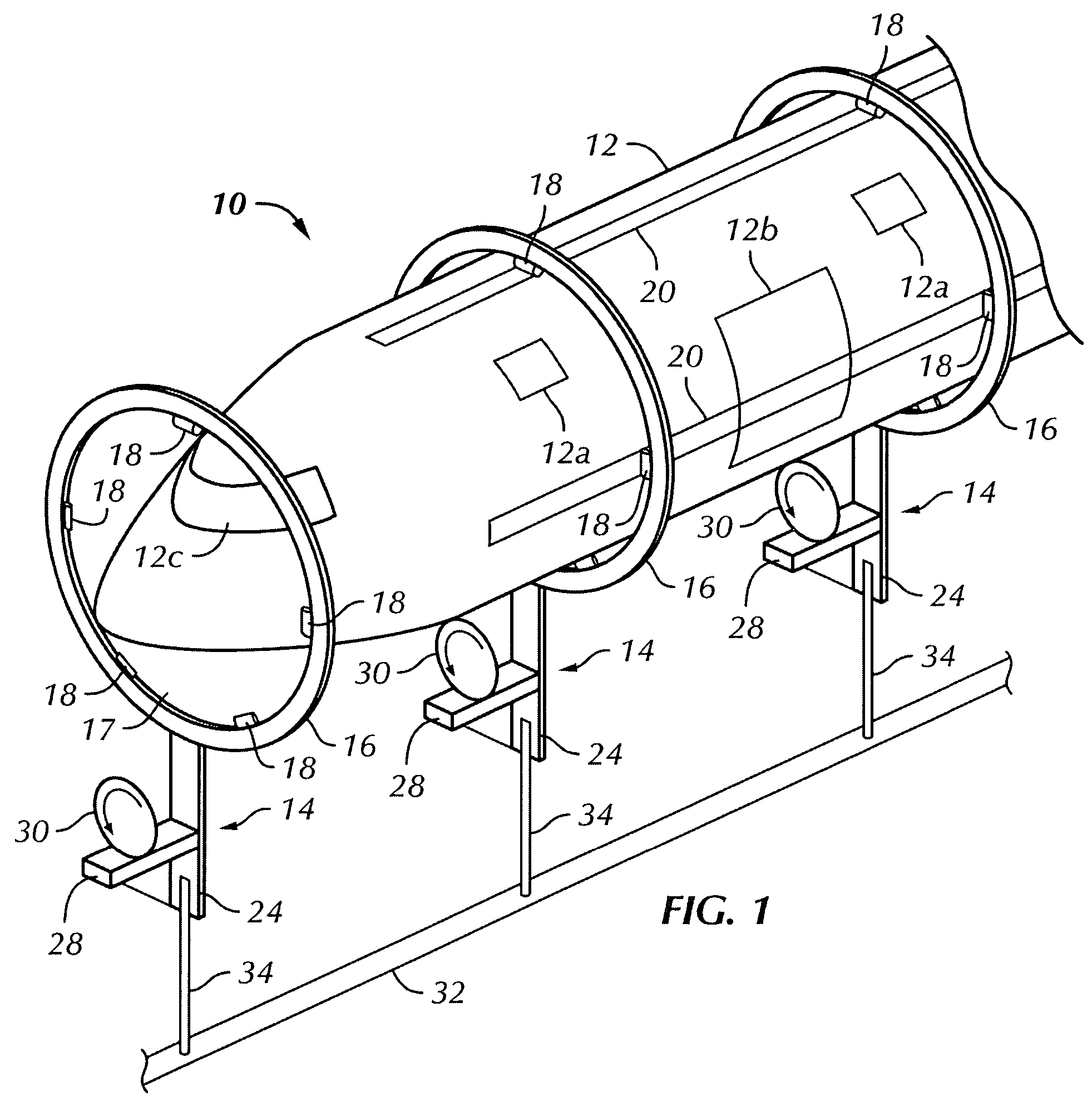Transportation system
a transportation system and mass transit technology, applied in the field of mass transit systems, can solve the problems of inability to meet the needs of vehicles, so as to reduce the drag of vehicles, reduce the force of the support system, and limit the ability of rails and rollers
- Summary
- Abstract
- Description
- Claims
- Application Information
AI Technical Summary
Benefits of technology
Problems solved by technology
Method used
Image
Examples
Embodiment Construction
[0032]FIG. 1 depicts an overall schematic of a transportation system 10 constructed in accordance with this invention. The system 10 comprises an elongated car or vehicle 12 and a plurality of supports 14. The car or vehicle 12 may have suitable number of appropriately located windows 12a and doors 12b, and a cockpit 12c for an operator. If the vehicle is to be fully automated, the cockpit 12c may serve as an observation area for safety or emergency control purposes. The vehicle body 12 is presently contemplated to be a unitary structure or it may be an articulated body, if desired.
[0033] The supports 14 are arranged to define a route of travel along a desired course at an elevated height for transport of passengers and cargo. In a contemplated embodiment, the vehicle 12 is about 500 feet long, and the supports are about 200 feet apart, so that there are typically at least two, and optionally three or more, supports 14 in contact with a vehicle 12 at any time. The spacing of the su...
PUM
 Login to View More
Login to View More Abstract
Description
Claims
Application Information
 Login to View More
Login to View More - R&D
- Intellectual Property
- Life Sciences
- Materials
- Tech Scout
- Unparalleled Data Quality
- Higher Quality Content
- 60% Fewer Hallucinations
Browse by: Latest US Patents, China's latest patents, Technical Efficacy Thesaurus, Application Domain, Technology Topic, Popular Technical Reports.
© 2025 PatSnap. All rights reserved.Legal|Privacy policy|Modern Slavery Act Transparency Statement|Sitemap|About US| Contact US: help@patsnap.com



